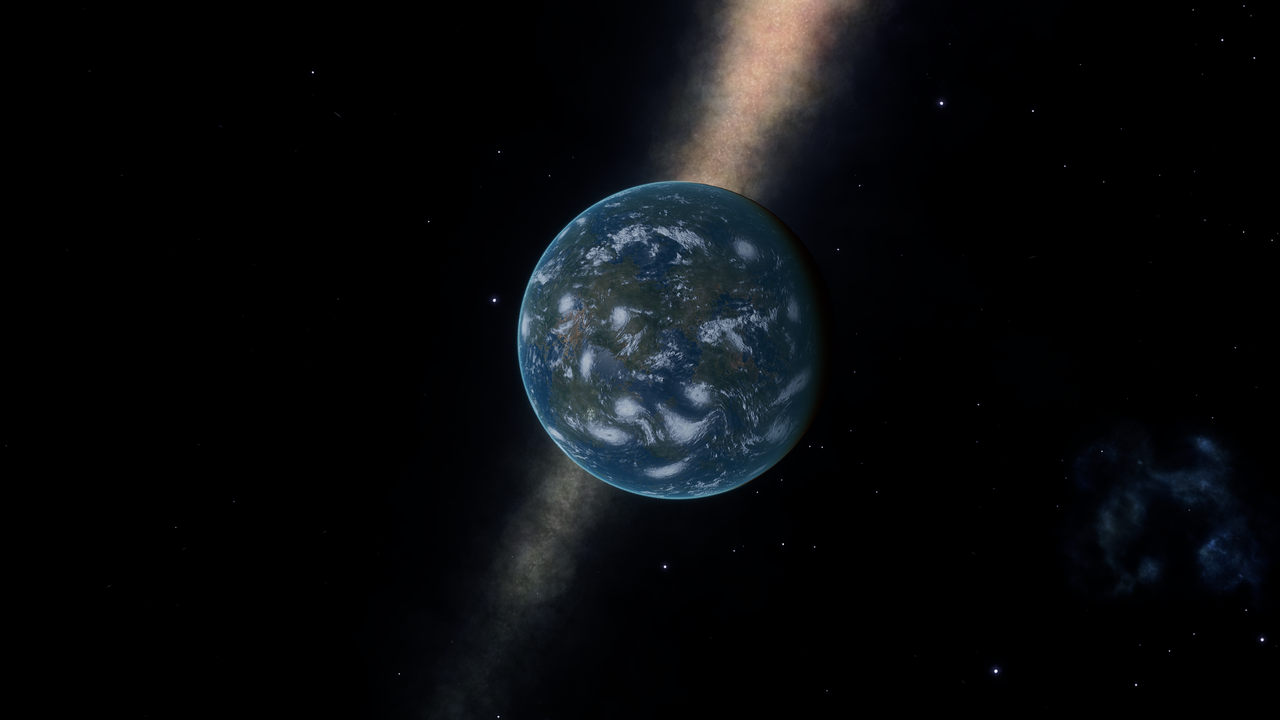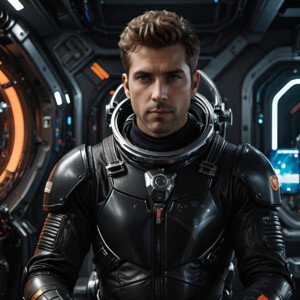JOURNEY OF A COMMANDER PART 31
04 Sep 2023Ni6h70wl
17.03.3308 - Novara Expedition Day 175
image rights: picture alliance/Zoonar/Cigdem Simsek
Even though medical care and technology is very advanced in 3308, it still takes two days to treat any bacterial and viral infections. During this time, even the best body is weakened and requires rest. After two days I was fit again, but was still only allowed to move around my ship in a restricted way. In addition, a scientist in a protective suit was made available to me as a replacement for my first officer.
Today the Novara reached the trinary system Eufarb KC-K d9-6, the measurement data showed at star C, one terraformable water world and four terraformable high-metallic worlds. C 7 aroused my curiosity, the planet is landable and has a thin carbon dioxide atmosphere. The much more interesting thing is the fact that both geological signals and a biological signal occur on this planet. Definitely worth a look.
_17.03.2022_20_32_36.png)
_17.03.2022_20_53_16.png)
"Fascinating, this is the first time we have detected the presence of crystal shards on a planet with an atmosphere. In the future, we'll have to keep our eyes open on planets with atmospheres as well," I noted.
"Since this life form is also found on planets without atmospheres, this organism should not get its energy and metabolism from the surrounding air," one of my scientists remarked.
"We will land and take samples, we may be able to better understand the formation and occurrence of this species afterwards."
Afterwards, I went to the SRV and collected the necessary samples and incidentally a few materials that arise in the vicinity of the geological signals.
19.03.3308 - Novara Expedition Day 177

The Novara now reached the planetary nebula of the system Flyoo Groa SO-Z e0, called Alastor.
Alastor is a small blue and pink planetary nebula deep in the vastness of the Abyssal Plain. Named in honour of Percy Bysshe Shelley's poem Alastor or the Spirit of Solitude. This nebula is a welcome splash of colour in the wasteland of the western parts of the Scutum-Centaurus arm. Inside the nebula is a neutron star, the stellar remnant of a supernova 230 million years ago. There are no bodies suitable for landing in this system, although a K-class star 16,000 light seconds from the neutron star is orbited by a gas giant in which water-based life exists.




This nebula is one of the only two known habitats for the extremely rare stolon trees.
Stolon trees are massive plant-like organic structures found in remarkable stellar phenomena. These organic structures last for millennia in the vacuum of space. They consist of several bulbous bioluminescent limbs emanating from a central cluster, and stolon pods are found at the ends of some limbs. These seed pods are colloquially known as space oysters because there is sometimes a pearly object in the centre of the pod. So far, they have only been found in the Outer Scutum-Centaurus Arm.
The DSSA Solsen's Alastor is a private research vessel commissioned by the Solsen Institute to study biological and organic structures, particularly stolon trees and pods. As a commitment to the scientific community, the ship also provides DSSA services and a safe haven for outlaws venturing into the Outer Scutum Centaurus Arm.
Apart from the decks reserved for research and carrier services, one of the main promenade areas is used by THE CAVE, a loose association of elites and the main sponsor of the mission. Called The Hamster, the Promenade Fair is the only place in the galaxy where you can sample a Stolon Spiced Beer. A local blend of Deriso beer and local Stolon spice.
The Stolon Tree Research Park includes two locations Flyoo Groa SO-Z e0 (Alastor ) and Flyoo Groa XW-W c4-13 (Asterius). The carrier can make the short jump between the systems if necessary. Asterius (the brother) has landable bodies, two stolon sites and tritium hotspots overlooking the Alastor Nebula.

The Novara explored both systems and returned to the DSSA Solsen's Alastor to replenish supplies. We tried this very special tasting Stolon Spiced Beer and came to the conclusion that it is not everyone's cup of tea. Quite strong at the beginning and very tart in the finish.
After this stop, we went on to another POI.
21.03.3308 - Novara Expedition Day 179

Two days later the ship reached another waypoint I had planned and we jumped into the system Footie AA-A g0 which is also called "Blue In The Black".
This system of three binary pairs, O, B and AeBe, is by some distance one of the brightest systems yet discovered in the Abyssal Plane. It doesn't really show up on the galaxy map, but discoverers have reported that it is a very noticeable point of light in the skybox outside your cockpit window. Which we have also been able to confirm at a distance of 30 light years.
Another peculiarity is that the relatively young system is 8 million years old, but the two Herbig AeBe stars are only 2 million years old. Which means that this system is still in its formation phase. To keep the radiation exposure as low as possible, we did not stay too long in the system and continued the journey towards Erikson's Star.
22.03.3308 to 26.03.3308 - Novara Expedition Day 180 - 184
Within four days we were able to discover four systems with an Earth-like planet, these systems were included in the ship's internal catalogue for potentially habitable planets:
- Ploi Brai VD-H c24-0 2
- Pru Chreou XT-A c2 A 1
- Cyietcheia IV-P d5-0 AB 2
- Cyietcheia QW-W d1-10 A 7




The virus infection lasted for 12 days and after my medical team could no longer detect any active viruses, I was allowed to move around the ship freely again.
We paused in the rings of a gas giant and enjoyed the sight that the diffuse light offered us.

27.03.3308 - Novara Expedition Day 185
"There's a non-human signature."
"I'm sorry, what?", I couldn't believe my ears.
"You heard me right, the surface scanner has registered three non-human signatures," my, now heavily pregnant, first officer repeated herself.
"Put everyone on alert for possible first contact with alien beings!" I barked through the ship's loudspeaker system, putting everyone in a state of emergency.
But how did it come about? We jumped with the Novara into the system Praichao BI-Q d6-10, planet 1 proved to be a source of geological signals and thus also of raw materials. As standard procedure, I launched surface drones at the planet and had my first officer analyse the data. And by all appearances, we are not alone on this planet.
"Alright, as a research vessel we need to get to the bottom of this, we'll pick a location and land nearby. After that I'll take a look, who knows maybe we've discovered a new species now."
"Or got ourselves into trouble." my better half admonished.
"Or that, COVAS, initiate landing sequence."
---Affirmative---
---Landing sequence initiated---
---Landing sequence initiated---
The ship touched down and I lowered myself into an SRV. For safety reasons, I diverted power into the SRV shield and weapons systems, and approached the non-human signature cautiously.

A crashed, or dropped, Thargoid sensor... in any case, the thing is broken, for several fragments lie scattered around the sensor. I got out and approached with my plasma rifle at the ready, you never know.
Sure enough, a broken sensor, but what is it doing so far out? I decided not to stay out of my ship any longer than necessary and quickly returned to transmit the data to my xenological department.
These strange sensors are objects of Thargoid origin. They are able to repair themselves by extracting non-organic material from their immediate environment, and this self-repair mechanism can severely damage starships and other machinery. They can also scan nearby ships and celestial bodies and transmit information about the scanned object in encrypted form.
However, as this is obviously damaged, it could not transmit information to wherever.
That was our first thargoid sensor, now we know how these things are displayed in our system.

In the evening we reached the system Blae Flyoae IY-G d11-3 and thus also the carrier DSSA Earthgov of Cmdr Connor McCall, thank you for the great service. We stayed on the carrier for some time and enjoyed the wonderful view of an Earth-like world, which is being explored by Cmdr Connor McCall and his crew. From now on we will set a direct course for Erikson's Star.
